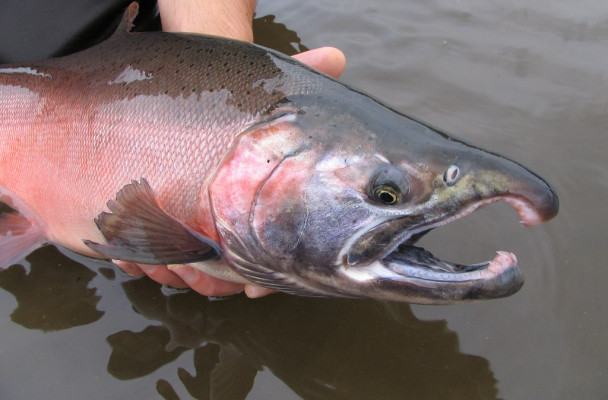Subsistence fishermen on the Yukon are getting some rare gillnet openings during the middle of the summer season, and will be allowed to keep any king salmon they catch.

Targeted openings for Yukon king salmon have not occurred in more than 5 years, though occasionally subsistence users are allowed to keep kings taken as bycatch in the summer chum fishery.
Fish and Game Yukon River Summer Season Manager Holly Carroll said the idea of allowing gillnets during the heart of the summer run has been developing since the end of the 2015 fishing season, when subsistence users up and down the Yukon repeatedly criticized managers for not enabling people to meet their subsistence needs.
When it came time to discuss the 2016 management plans last winter, Carroll said that subsistence users and fishery managers came to a consensus.
“We told them that we would rather, if the run looks strong enough, provide a little bit more subsistence harvest than last year,” Carroll said. “And most people gave us feedback on how they would want that. They want it soon enough to be able to dry their fish. They want it before all of the kings are old or unusable upriver. They also wanted chums when they were fresher, for the people that harvest chums. Basically at those meetings, we present our management strategy, and then we take all of the feedback we are given, and try to incorporate what say they actually want.”
The openings are being timed to fall after a large second pulse of kings moves upriver, in order to minimize the impact that the more efficient gillnet gear could have on the struggling king salmon stock.
The 2016 king run appears to be similar in size to last year’s run, when over 85 thousand kings crossed into Canada – almost twice as much as required by a treaty between the U.S and Canada.
Fish and Wildlife Service Yukon River In-Season Manager Fred Bue acknowledges that managers achieved that high level of escapement, in part, by virtually eliminating subsistence fishing time. But this year, Bue said, managers want to provide better subsistence opportunities on the river.
“There’s no way we are going to meet people’s needs,” Bue said. “But we do hope to get a little bit of fish for people to use, and we hope to have it not right on the back end of the run when the quality of fish kind of deteriorates. It’s not as good as those first, fresh fish. If you are going to harvest a fish, we would like you to get the maximum benefit out of it.”
A series of 18-hour openings utilizing gillnets with a maximum mesh size of 6 inches have occurred in lower river districts 1 and 2, and similar opportunities will be afforded to middle and upper river districts over the next few weeks.
A 6-inch mesh restriction for gillnets is intended to select the smaller males, while allowing spawning females to escape.
Middle and upper river fishermen are more likely to harvest kings as the runs separate, and chum turn off into tributaries to spawn.
The Pilot Station sonar estimate for kings on Tuesday was just over 91 thousand fish – about 18 thousand fish above the 10-year average for that date. Managers attribute some of that high number to the early run timing this year.




